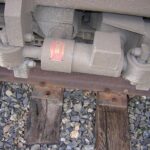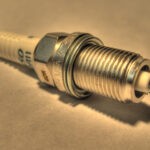Stage 1 vs. Stage 2- Differences Explained
Both the Stage 1 and Stage 2 clutches are designed for street driving. However, the manufacturing materials of the stage 2 clutch are much more durable. In this article, we will discuss the stage 1 vs. stage 2 clutch and talk about their differences. Let’s go!
What is a Stage 1 and Stage 2 Clutch?
The stage 1 and stage 2 clutches have been designed for a rough style of driving. While both types of clutches are quite similar in most aspects, they differ in their torque capacity and durability. Stage 2 clutches are known to have a higher torque capacity and better durability than the two.
All in all, 5 different stages are offered in performance clutches. All of these stages come with their own set of features, torque capacities, power ratings, and driving and use conditions. Seven performance clutches are offered in these five stages.
The stage 1 clutch has been designed for autocross use, pulling, rally, road racing, drift, drag racing, and street racing. It comes with a high-performance integrally molded carbon Kevlar-based lining. This ensures a long-lasting life and smooth engagement.
Other features of the stage 1 clutch include a tool and bearing kit, high torque disc assembly and spring hub, multi-compound and steel-backed weaved organic material, and a high clamp pressure plate.
The stage 2 clutch is meant for autocross use, pulling, drag racing, and street racing. It comes with a full-faced or segmented pure Kevlar disc along with steel backing. This stage has higher torque capacity and a slightly longer life as compared to the stage 1 clutch.
Also read: How Long Should Clutch Last? How Much is a New Clutch?
What are the Differences Between a Stage 1 and Stage 2 Clutch?
Let’s find out about the basic differences between the stage 1 and stage 2 clutch.
Easier To Install and Use
The stage 2 clutch is a little harder to install and use as compared to the stage 1 clutch. This is mainly due to the fact that stage 1 products can be installed directly without having to take the engine or other parts into consideration.
No other parts need to compensate for the stage 1 clutch and similarly, the engine does not have to face any negative effects.
The stage 1 clutch helps improve power and torque, but ensures that they stay within the manufacturer’s safety limits. In addition, stage 2 clutches are also known to wear out your engine a little faster than the stage 1 clutch. The stage 1 clutch doesn’t even affect the street legality of your car.
When it comes to ease of use, the stage 1 clutch takes more points once again as it is much easier to shift as compared to the stage 2 clutch. However, the reason for this is that stage 2 clutches have been designed specifically for professional use.
For this reason, it helps reduce the leeway in shifting allowed to the user by the stage 1 clutch. It also puts a little extra pressure on the engine.
Engine’s Capacity for Power and Torque
The engine’s capacity for torque and power is greatly increased by both the stage 1 and stage 2 clutches. However, the ability of stage 2 clutch to do this is much greater than that of a stage 1 clutch.
For example, the Spec stage 2 clutch has the capacity to bear a torque of around 411 foot-pounds as compared to the 300 foot-pounds torque capacity of the previous clutch. This is quite helpful when it comes to climbing hills quickly and increasing acceleration.
Extra Parts to Make them Compatible with the Car
The stage 1 clutch does not require any extra parts however, the stage 2 clutch does require some extra parts to make it compatible with the car.
For example, the Spec stage 2 clutch that we talked about before, is way too powerful for the original flywheel of the car. It would put a lot of pressure on the car’s flywheel and destroy it if it was installed without any extra parts.
Therefore, a new and more durable flywheel needs to be installed so that it can easily handle all the extra torque.
Also read: 3 Things Happening if You Keep Driving with a Bad Clutch
How Much Does a Stage 1 And Stage 2 Clutch Cost?
There isn’t a big price difference between the stage 1 and stage 2 clutch. While the stage 1 clutch costs about $300, the stage 2 clutch may cost you a little above $500. All in all, the stage 2 clutch still costs more than the stage 1 clutch.
Well if we were to consider the benefits stage 2 clutch provides over stage 1 then this price gap would not seem that significant.
However, another point worth noting here is the added cost of other parts that need to be replaced if stage 2 clutch is installed. So, it isn’t a $200 gap between the prices of two clutches, in reality replacing a stage 1 clutch with stage 2 can cost you way more than that.
Will a Stage 2 Clutch Make My Car Faster?
Yes, a stage 2 clutch makes the car faster in the sense that it gives the car the ability to handle more power. This allows it to achieve greater speeds as compared to those achieved by the stage 1 clutch.
It allows for higher RPMs and hence, helps engage your car much faster. More power will not be produced by the stage 2 clutch but it allows for more effective and efficient use of the available power.
How To Choose Between Stage 1 and Stage 2 Clutch?
The choice between the stage 1 and stage 2 clutch entirely depends on your requirements. A stage 1 clutch will suit you better if you need a clutch that helps improve the performance a little but does not affect the smoothness of the engagement. It will not add any more stiffness to your clutch either.
On the other hand, if you want much better performance and you are willing to compromise on the daily usability of your car, the stage 2 clutch is the one for you. The stage 2 clutch enables your car to handle extra power and torque. However, it requires extra parts and is not as easy to handle as the stage 1 clutch.
FAQ
- What does upgrading a clutch do?
Answer: Upgrading a clutch has more to do with the performance of your car. It is application specific so it allows the clutch to run for longer durations and transmits higher power levels.
- How do I know when the clutch is going out?
Answer: Following are some of the signs of your clutch going out:
- When you apply pressure, you will hear unusual grumbling or squeaking noise.
- You will face difficulty in changing gears.
- The clutch will stick or appear loose.
References:
www.lsxmag.com, itstillruns.com, www.rx7club.com, drivefacto.com






